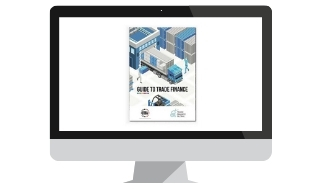Understanding MT 700: The Documentary Credit Message
The MT 700 is a crucial message type in international trade finance, transmitted via SWIFT (Society for Worldwide Interbank Financial Telecommunication) to convey the terms and conditions of a documentary credit. This page breaks down the MT 700 format, highlighting its structure, network-validated rules, and usage guidelines to provide a comprehensive overview.
Who uses MT 700 and why?
The users of MT 700
The MT 700 message is extensively used by banks and financial institutions engaged in international trade finance. Specifically, it is issued by the originating bank, which opens the documentary credit on behalf of the applicant (typically a buyer or importer) and is sent to the advising bank, usually located in the beneficiary’s (the seller or exporter) country. This critical financial document plays a vital role in facilitating secure and efficient transactions across borders, ensuring that all parties involved adhere to any agreed-upon terms and conditions.
SOURCE: SWIFT
Reasons for using MT 700
The primary reason for using an MT 700 is to provide a secure and standardised method for communicating the details of a documentary credit. This SWIFT message type guarantees that the terms of the credit are clearly understood and agreed upon by all parties, thereby minimising the risk of disputes and misunderstandings.
It is an essential tool for mitigating risks in international trade, as it assures the seller of receiving payment under the specified conditions, while the buyer is assured that payment will only be made upon the fulfilment of these conditions. The MT 700 thus facilitates smoother, more reliable trade transactions by providing a framework within which trust can be established between international trading partners.
MT 700 format specifications
- Scope: Issued by the bank opening the documentary credit (issuing bank) and sent to the bank advising the credit (advising bank), the MT 700 details the terms under which the credit has been issued.
- Status and Structure:
- Mandatory (M) and Optional (O) tags indicate whether a field must be filled in.
- The format includes a range of fields from “Sequence of Total” to “Sender to Receiver Information,” each with specific content requirements and options.
Key fields explained
- 27 – Sequence of Total & 20 – Documentary Credit Number: Provide a sequence for messages related to the same credit and a unique identifier for the credit, respectively.
- 31C – Date of Issue & 31D – Date and Place of Expiry: Specify the timeframe within which the credit is valid, from issuance to expiry.
- 50 – Applicant & 59 – Beneficiary: Identify the parties initiating and benefiting from the credit.
- 32B – Currency Code, Amount: Details the credit amount and the currency it’s denominated in.
- 49 – Confirmation Instructions: Relays whether the advising bank is to add its confirmation to the credit.
Network Validated Rules
- C1 & C2: Stipulate that certain fields, such as 42C (Drafts at…) and 42a (Drawee), must be used in conjunction and specify allowed combinations of fields to accurately convey payment details and conditions.
- C3: Dictates the exclusive presence of either field 44C (Latest Date of Shipment) or 44D (Shipment Period), emphasising the importance of clear shipment timelines.
Usage rules
- Document length: For documentary credits requiring extensive explanation, additional information is to be communicated through MT 701 messages, ensuring comprehensive coverage without repetition.
- Operative credit instrument: Emphasises that, unless otherwise specified, a documentary credit communicated via MT 700 is deemed operative, underlining the message’s binding nature in trade finance operations.
- Field consistency: Information in MT 700 must not be repeated or conflict with that in any related MT 701.
- Clarity and precision: Advising banks must ensure the documentary credit is advised clearly and unambiguously to the beneficiary.
Potential issues with MT 700 usage
- Complexity and errors: The detailed and structured nature of MT 700 messages, while beneficial for clarity, can lead to complexity in filling out the forms accurately. Errors in these messages can cause delays in transactions, misunderstandings, or financial losses.
- Fraud risk: Despite the secure nature of SWIFT messaging, the system is not immune to fraud. Parties may present fraudulent documents or misuse the MT 700, necessitating robust verification processes.
Interoperability challenges: As global trade involves multiple parties across different jurisdictions, the varying levels of technological adoption can lead to interoperability issues, where not all banks or financial institutions can efficiently process or verify MT 700 messages.
Advancements in MT 700 usage
- Blockchain and smart contracts: Innovations such as blockchain technology and smart contracts are being explored to complement or potentially replace traditional methods like the MT 700. These technologies promise enhanced security, reduced risk of fraud, and increased efficiency by automating the verification process and ensuring compliance with the terms of the documentary credit.
- Digitalisation of trade finance: The digitalisation wave within trade finance is leading to more streamlined processes, where electronic versions of trade documents, including electronic Letters of Credit (eLCs), are becoming more accepted. This digital shift could mitigate some of the issues related to manual data entry and paper-based documentation.
- Integration with trade platforms: The integration of MT 700 messaging within broader digital trade platforms and ecosystems offers improved efficiency, better tracking of transactions, and enhanced collaboration among all parties involved in international trade. These platforms can provide real-time updates and facilitate quicker resolutions to discrepancies or issues.
The landscape of international trade finance is evolving rapidly, with technological advancements aimed at addressing the inherent challenges of traditional instruments like the MT 700.
The MT 700 plays a pivotal role in documentary credit transactions, facilitating clear communication of terms and conditions between the issuing and advising banks. Understanding its structure, rules and specifications is essential for professionals in international trade finance to ensure smooth and efficient transactions.
While there are potential issues related to complexity, fraud, and interoperability, ongoing innovations in digitalisation, blockchain, and integrated trade platforms are paving the way for a more efficient, secure, and transparent future in trade finance.
Other Messaging Types and More Info
Speak to our trade finance team
Benefits
- Fast and efficient – speak with our trading team within minutes
- Great rates – beat high street bank rates with Trade Finance Global
- Our partners are regulated and trusted experts
- Experts partners who are specialised in geography and sectors
 Australia
Australia Hong Kong
Hong Kong Japan
Japan Singapore
Singapore United Arab Emirates
United Arab Emirates United States
United States France
France Germany
Germany Ireland
Ireland Netherlands
Netherlands United Kingdom
United Kingdom

















